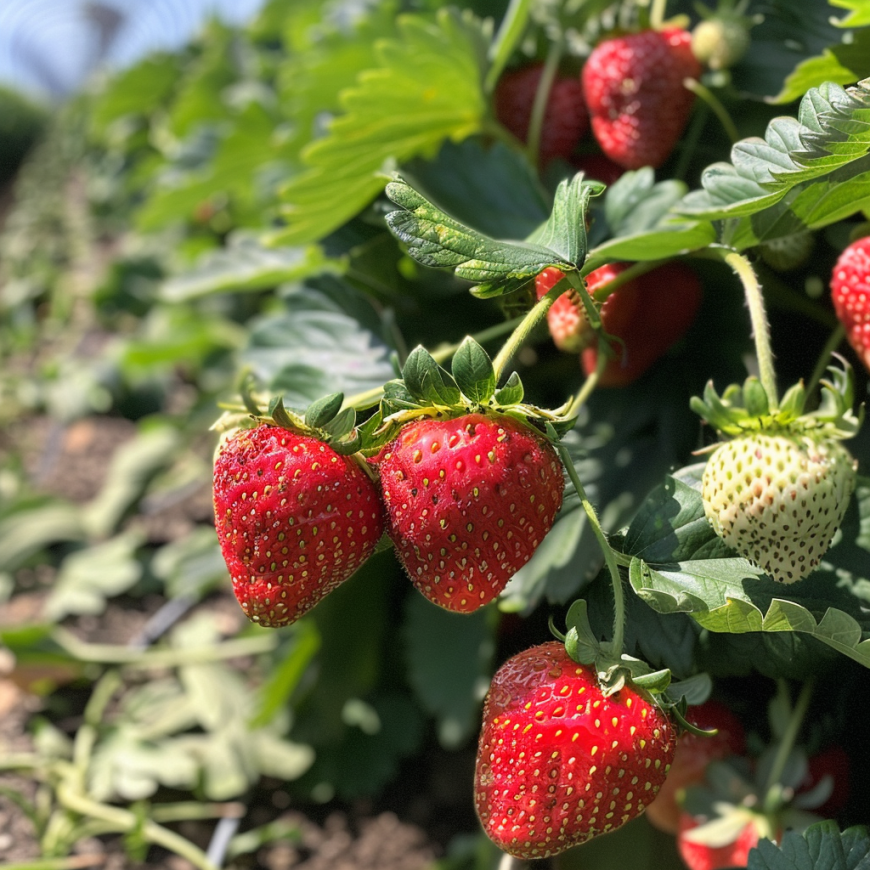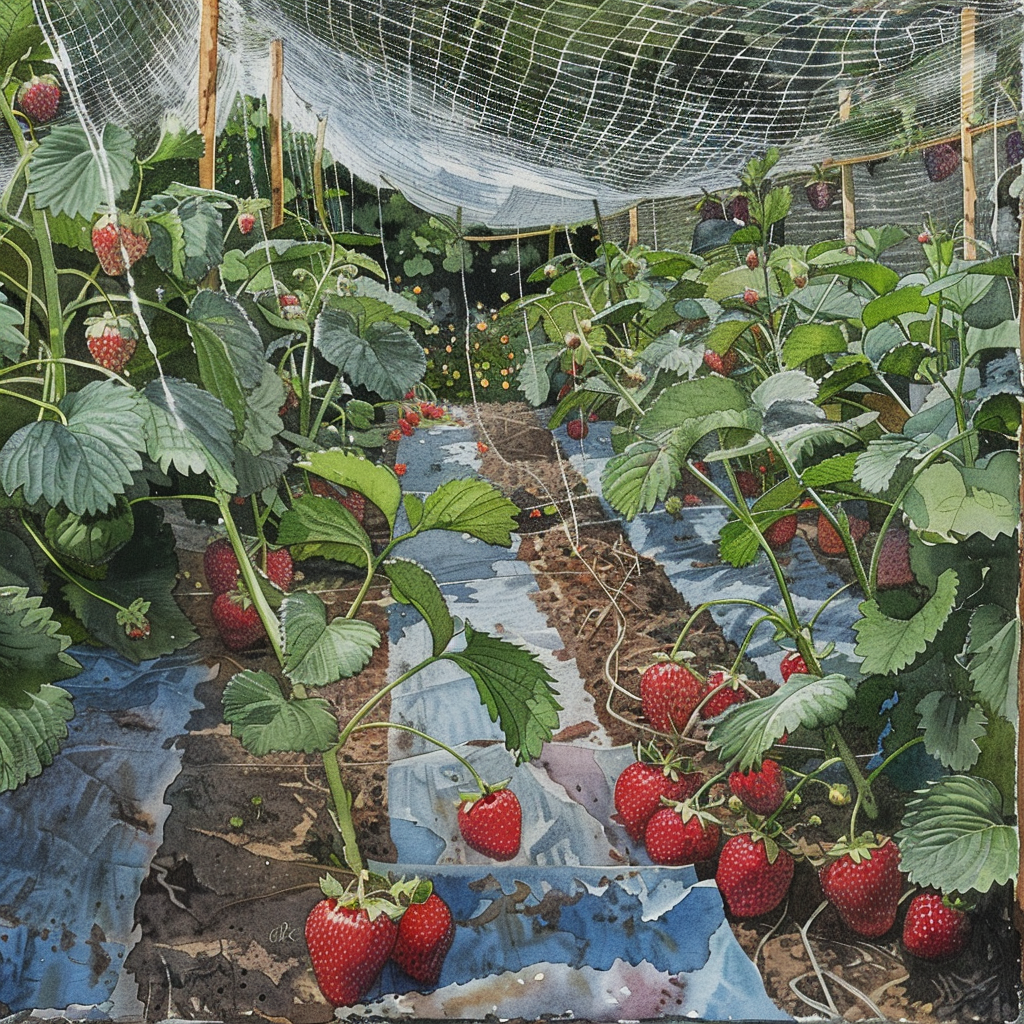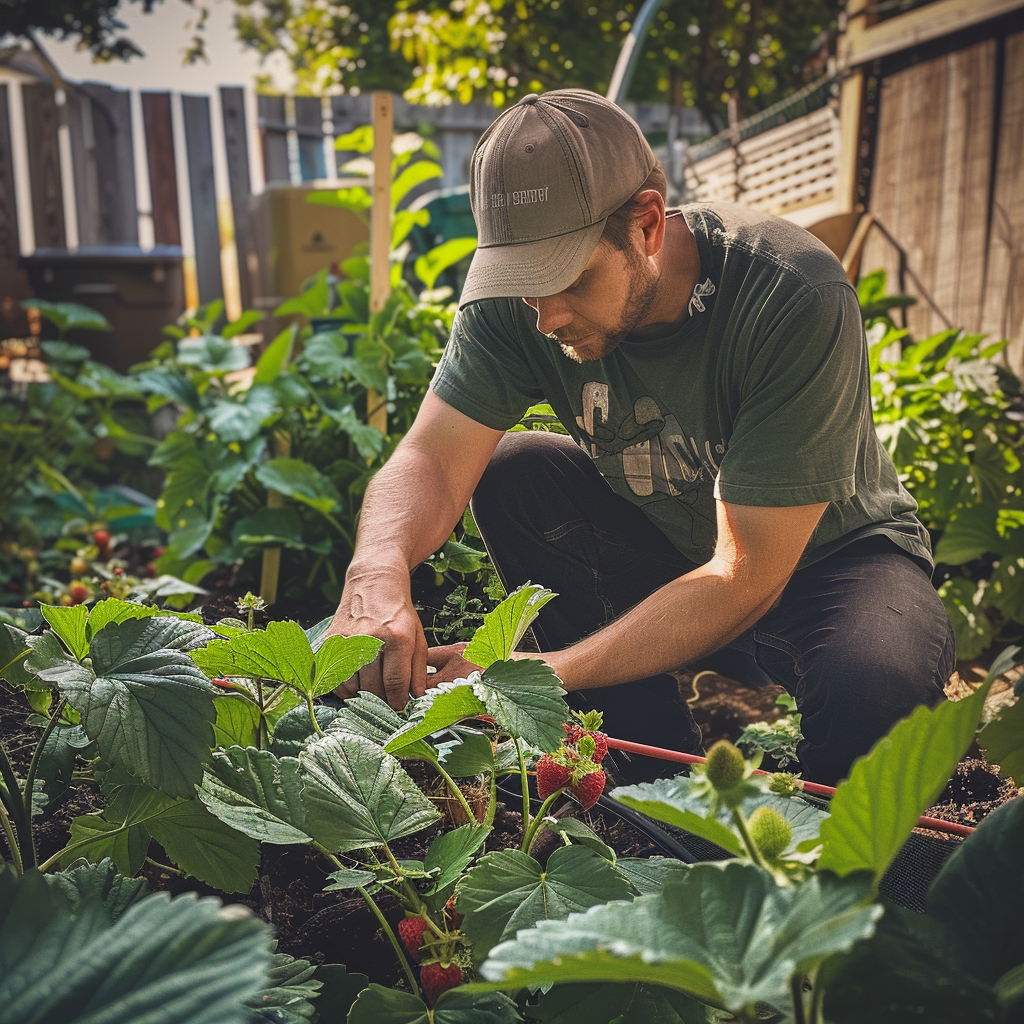Growing your sweet, juicy strawberries is a rewarding experience for any home gardener. However, you may wonder if these popular fruits must be replanted yearly for the best harvest.
The good news is that with the right care and attention, you can enjoy delicious homegrown strawberries year after year without constant replanting. In this article, we’ll explore strawberry plants’ life cycles and provide simple tips for keeping your strawberry patch thriving.
Whether you’re a seasoned green thumb or just starting, you’ll discover how to maximize your strawberry yield and enjoy the fruits of your labor for future seasons.
Why Do You Need to Replant Strawberry: The Decline in Productivity
1. Natural Aging Process
As strawberry plants age, they naturally produce less fruit, and the berries may be smaller or less flavorful. This decline in productivity is most noticeable after the first 2-3 years, which are typically the prime fruiting years for most strawberry varieties.
While proper care can help extend the lifespan of your plants, it’s important to recognize that this gradual decline is a normal part of the strawberry plant’s life cycle.
2. Other Contributing Factors
In addition to the natural aging process, several other factors can contribute to declining strawberry plant productivity. Over time, pests and diseases may accumulate in the soil or on the plants, weakening them and reducing fruit quality.
As the plants absorb nutrients from the soil, the growing area may become depleted, leading to less vigorous growth.
Furthermore, as strawberry plants produce runners and daughter plants, the bed can become overcrowded, resulting in increased resource competition and reduced fruit size.
Benefits of Replanting Strawberry Plants
1. Disease Control
One primary benefit of replanting strawberries is improved disease control. By establishing new plants in a fresh location or using disease-free stock, you can reduce the buildup of soil-borne pathogens and pests that may have accumulated over time.
This helps promote healthier plants and minimizes the risk of disease transmission, ensuring a more robust and resilient strawberry patch.
2. Rejuvenated Growth
Replanting strawberries using new plants or carefully selected runners can breathe new life into your garden. Younger plants have more vigor, resulting in stronger growth and larger, more flavorful berries.
By regularly refreshing your strawberry patch, you can maintain the vitality of your plants and enjoy the best possible harvests.
3. Sustained Yields
Regular replanting is essential to ensure consistent, high-quality yields year after year. Proactively replacing aging or less productive plants can maintain a steady supply of healthy, fruit-bearing strawberries that align with your gardening goals.
This approach allows you to optimize your garden space and enjoy harvesting delicious, homegrown berries each season.
Understanding the Best Timing for Replanting
Seasonal Guidelines
To give your new strawberry plants the best chance of success, replanting them at the right time is crucial. In most cases, early spring or late summer to early fall are the optimal seasons for replanting.
Establishing new plants during these periods allows them to develop strong root systems and adapt to their new environment before the stress of extreme temperatures or dormancy sets in. Proper timing can significantly influence your strawberry patch’s overall health, growth, and yield.
Climate Considerations
When planning your replanting schedule, consider your local climate. Fall planting can be advantageous in regions with mild winters, as it gives the plants time to establish themselves before the following spring.
However, spring planting is generally preferred in areas with harsh winters to avoid the risk of frost damage to young plants. Pay attention to your local frost dates and growing season length to determine the best time for replanting in your location.
Exploring Replanting Methodologies
1. Transplanting Runners
One popular method for replanting strawberries is to use runners from existing plants. To do this, select healthy, vigorous runner plants with developed roots.
Cut the runner from the parent plant, ensuring the new plant has a sufficient root system. Then, transplant the runner into a prepared bed or container. This cost-effective method allows you to preserve desirable traits from your best-performing plants.
2. Starting Anew with Purchased Plants
Another option is to start fresh with purchased strawberry plants. This approach offers several advantages, such as access to disease-free stock and a wider variety of cultivars.
When buying new plants, look for reputable nurseries or suppliers to ensure the highest quality stock. Starting with new plants can be particularly beneficial if your strawberry patch has declined due to pest, disease, or soil issues.
Comparison and Considerations
When deciding whether to transplant runners or start with new plants, consider factors such as labor intensity, initial investment, and long-term garden health.
Transplanting runners may require more time and effort, but expanding your strawberry patch can be low-cost. Purchasing new plants may involve a higher initial investment but can provide a fresh start and introduce new varieties to your garden.
Ultimately, the best method depends on your needs, goals, and resources. Consider your available time, budget, and the overall health of your strawberry plants when deciding.
Basic Strawberry Plant Care: Fundamental Needs
Understanding their basic requirements is important for growing strong, productive strawberry plants. Providing the right conditions from the start sets your plants up for success, and you can enjoy sweet, flavorful berries for years.
1. Sunlight
Strawberries grow best when they receive 6-10 hours of direct sunlight daily. Choose a spot in your garden with plenty of sun to help the plants produce more flowers and fruits.
2. Soil Quality
Well-draining soil is also key, as strawberries don’t like sitting in water. The ideal soil pH for strawberries is between 5.5 and 7.0, allowing plants to absorb nutrients effectively.
If your soil is too alkaline or acidic, consider amending it with compost or other organic matter to create a more suitable environment.
3. Watering Needs
Consistent watering is crucial for strawberry plants, especially when they’re first established and during dry spells. Aim to give your plants about 1 inch of water per week through rainfall or irrigation.
Water deeply and evenly, ensuring the soil stays moist but not soggy. Mulching around the plants with straw or other organic materials can help retain moisture and keep the soil cool, especially during hot summer.
Overview of Strawberry Types
When planning your strawberry patch, it’s important to understand the different types of strawberries available. Each type has unique characteristics that can impact your harvest and overall gardening experience.
1. June-bearing Varieties
June-bearing strawberries are the traditional favorites, producing a large, focused harvest in early summer. These varieties thrive in cooler climates and have a long history of use in both commercial and home gardens.
If you’re looking for a single, abundant crop of sweet, juicy berries, June-bearing strawberries are an excellent choice.
2. Everbearing Varieties
Everbearing strawberries provide two to three harvests throughout the growing season, typically in late spring and summer. These varieties are perfect for home gardeners who want to extend their strawberry season and enjoy fresh berries over a longer period.
While the individual harvests may be smaller than June-bearing types, everbearing strawberries offer a more continuous supply of fruit.
3. Day-neutral Varieties
Day-neutral strawberries can produce fruit continuously from early summer into fall if temperatures remain favorable. These adaptable plants are not influenced by day length, making them a reliable option for gardeners in various climates.
With day-neutral varieties, you can enjoy a steady supply of fresh strawberries for much of the year.
Select the Right Type of Strawberry Plant for Your Garden

1. Gardening Goals and Climate Considerations
Consider your gardening goals and local climate when choosing between June-bearing, everbearing, and day-neutral strawberries. June-bearing varieties may be the best choice if you want a large, single harvest for preserving or sharing.
Opt for everbearing or day-neutral varieties for a more continuous supply of fresh berries. Some varieties may perform better in certain climates, so research which types are well-suited to your area.
2. Space and Care Requirements
Each strawberry type has slightly different space and care requirements. June-bearing plants typically require more room as they produce more runners and daughter plants.
Everbearing and day-neutral varieties are often more compact, making them suitable for smaller gardens or container growing. When selecting the right type for your garden, consider your available space and the time you can dedicate to caring for your plants.
How to Strawberry Plants Healthy: Essential Maintenance Tasks
To keep your strawberry plants healthy and productive year after year, perform a few key maintenance tasks. These practices help revitalize plants, protect them from harsh conditions, and ensure optimal growth and fruiting.
1. Renovation of Strawberry Beds Post-Harvest
After the harvest season ends, renovate your strawberry beds. This process involves removing old leaves, thinning out crowded plants, and preparing the soil for the next growing season.
Renovation helps improve air circulation, reduce disease risk, and encourage vigorous new growth. Trim back foliage to about an inch above the crowns, remove any weak or diseased plants, and thin out the remaining plants to maintain proper spacing.
Lastly, add a layer of compost or well-rotted manure to replenish soil nutrients.
2. Winter Care for Strawberry Plants
As temperatures drop, protecting your strawberry plants from the cold is crucial. Mulching is an effective way to insulate the plants during the winter months.
Apply a layer of straw, pine needles, or other organic material around the plants, taking care not to cover the crowns. This mulch helps regulate soil temperature and prevent damage from freezing and thawing cycles.
It also helps retain soil moisture and suppresses weed growth during the dormant season. Remove the mulch in early spring when new growth emerges.
3. Managing Runners for Optimal Productivity
Throughout the growing season, strawberry plants produce runners that can root and form new plants. While these runners are useful for propagating new plants, they can divert resources from fruit production if left unchecked.
Decide whether to keep or cut the runners based on your goals to maintain optimal productivity. If you want to expand your strawberry patch or replace aging plants, allow some runners to root and establish themselves.
However, if you focus on maximizing fruit yield, remove excess runners to prevent overcrowding and direct the plant’s energy towards berry production. Regular runner management helps maintain a balanced, productive strawberry patch.
4. Managing Pests and Diseases
Integrated pest management (IPM) is a comprehensive approach that combines regular monitoring, cultural practices, and targeted interventions to minimize damage from pests and diseases.
Start by regularly inspecting your plants for signs of pest activity or disease symptoms. Early detection allows for prompt action and can prevent minor issues from escalating into major problems.
Implement cultural practices that promote plant health and discourage pest and disease outbreaks, such as proper spacing, good air circulation, and consistent watering at the base of the plants to avoid wet foliage.
If pest or disease pressures become significant, consider using organic or chemical controls judiciously and only as a last resort. Always follow label instructions and prioritize using least-toxic options to minimize potential harm to beneficial insects and the environment.
To further reduce disease pressure, employ specific practices like crop rotation, planting resistant varieties, and maintaining good sanitation. Avoid planting strawberries in the same location year after year, as this can allow soil-borne pathogens to accumulate.
Choose varieties that are naturally resistant to common diseases in your area. Finally, promptly remove and dispose of any infected plant material to prevent the spread of diseases.
5. Bird Protection

As strawberries ripen, hungry birds make them attractive targets. To protect your harvest, implement bird deterrents before the berries begin to color. Netting is one of the most effective methods, as it creates a physical barrier between the birds and the fruit.
Install the netting securely over your strawberry patch, ensuring no gaps for birds to enter. Alternatively, consider using reflective tape or decoys to scare birds away. Move these deterrents regularly to prevent birds from becoming accustomed to their presence.
6. Frost Protection
Late spring frosts can devastate strawberry blossoms and young fruit, potentially wiping out a significant portion of your harvest. To protect your plants from frost damage, be prepared to deploy protective measures when necessary.
Monitor weather forecasts closely, especially during the bloom period, and take action when temperatures are expected to drop below freezing.
Row covers and cloches are effective tools for insulating plants from the cold. Place these covers over your strawberry plants before the expected frost in the evening and remove them in the morning once temperatures rise.
Another option is to use water irrigation to protect plants from frost. Set up sprinklers to gently mist the plants during the coldest night hours. The freezing water releases heat and insulates the blossoms and fruit.
However, be cautious with this method, as excessive moisture can increase the risk of fungal diseases.
Summing It Up
In conclusion, while strawberries are perennial plants, replanting them every few years is essential for maintaining a healthy, productive strawberry patch.
By understanding the natural aging process, the benefits of replanting, and the best timing and methods, you can ensure a bountiful harvest of sweet, juicy berries year after year.
Remember to provide your plants the proper care they need, including regular maintenance, pest and disease management, and protection against birds and frost.
With a little effort and attention, you’ll be rewarded with a thriving strawberry patch that brings joy to your garden and taste buds. So, what are you waiting for? Get out there and start planning your strawberry replanting strategy today!






